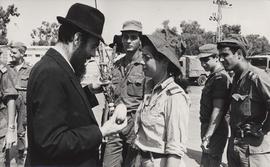Oral History Interview with Nora Patrich for the JMABC Artists Scribe. Interviewed by Carol Herbert. Patrich was born in Argentina in 1952 and speaks about her upbringing between Argentina, Israel and the United States. She discusses her exposure to political activism and Latin American expressionist art throughout her formative years, including mentorship within her father’s politically charged arts collective named the Spartacus Movement. She tells her experience of the military coup in Argentina during the ‘70s, that forced her into exile in Israel with young children after her husband was assassinated. She explains how this led to a life of traveling activism denouncing Argentina’s past military atrocities, including anti-Semitic genocide, and fighting for human rights through art and protest. Patrich’s primary art mediums are painted murals and sculptures; she discusses their public installments into places like past concentration camps and military bombing sites, and how her art will always be political. She closes by talking about doing mosaic work, independent book printing and publishing, and how there is a documentary about her stories of Argentina.


!['Israeli Paratroopers,' [Ben Wosk ?] standing in open field, parachutists in the sky above him](/uploads/r/jewish-museum-archives-of-bc-2/3/2/e/32e02bde44614d892650b2167dc6e067aad50df16842a607eddead9ea2f5f8d0/L_142.jpg)
![[Israeli] soldiers](/uploads/r/jewish-museum-archives-of-bc-2/9/7/7/977ea51039fc3bf7f642ad9e9f723f5759ac2c76f9d0d8444d2064acbf31f2a1/L_142.jpg)